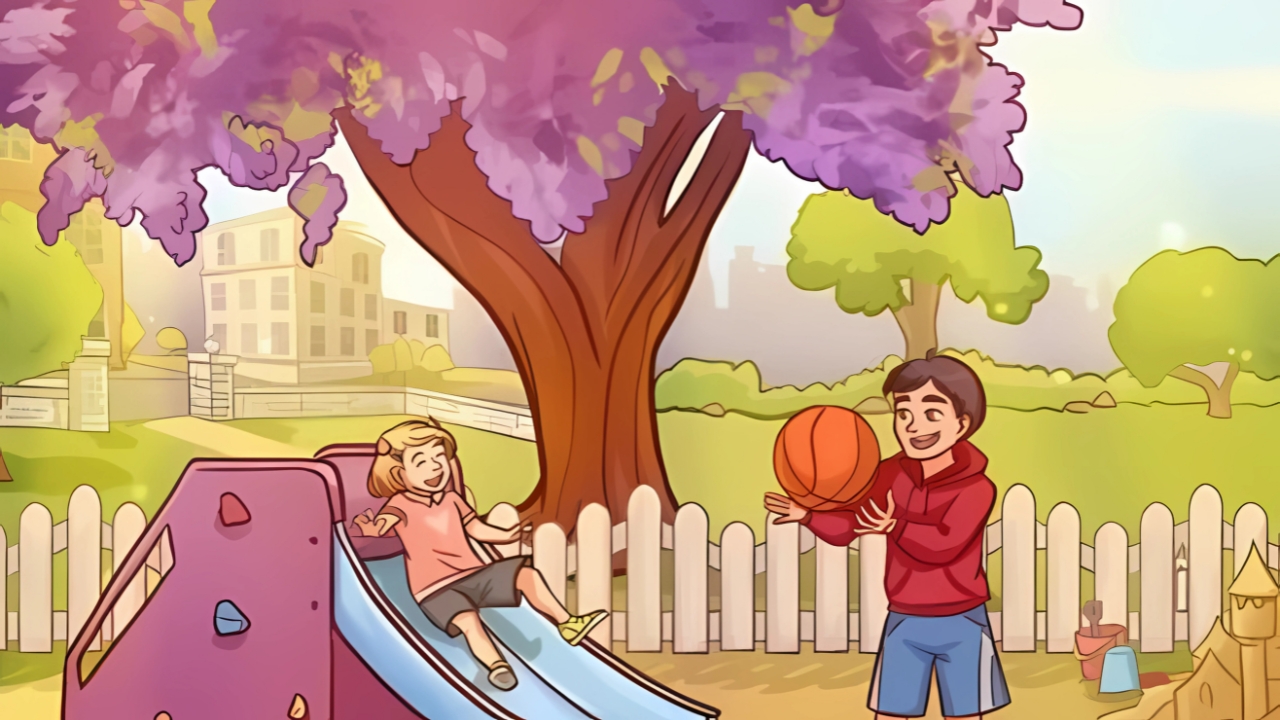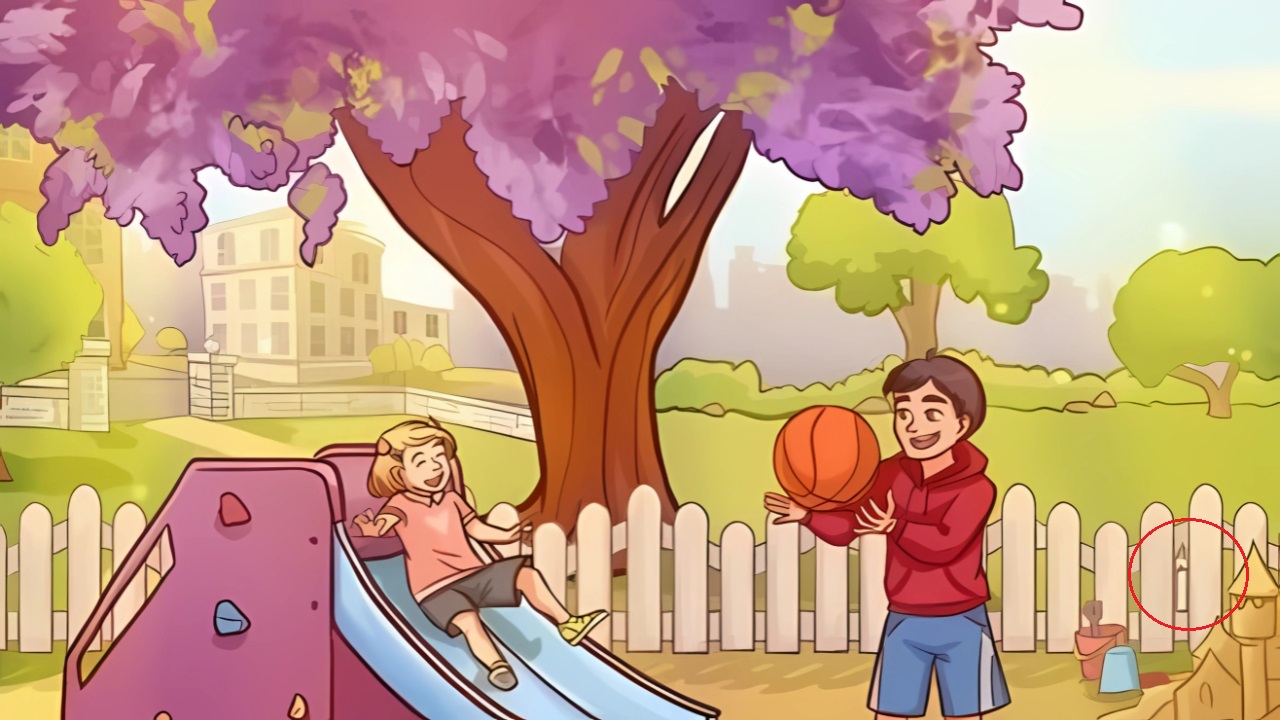Optical Illusion Challenges Find the Hidden Candle : In a world constantly bombarding us with visual stimuli, our brains have developed remarkable shortcuts to process information efficiently.
These cognitive mechanisms, while usually helpful, sometimes lead us astray—creating the fascinating phenomena we know as optical illusions.
Today, we’re diving into an enthralling visual puzzle that challenges your perception and tests your visual acuity: finding a cleverly hidden candle in just three seconds.
The Science Behind the Challenge
Optical illusions occur when our visual perception differs from objective reality. Our brains don’t passively receive visual information; instead, they actively interpret what our eyes detect based on past experiences, expectations, and evolutionary adaptations. This interpretive process happens so quickly that we’re rarely aware it’s occurring at all.
When facing a “find the hidden object” challenge, we’re essentially testing our brain’s ability to distinguish signal from noise—to identify meaningful patterns amidst visual distractions. The three-second time constraint adds an additional layer of complexity, forcing our visual system to work with remarkable efficiency.
Neurologically speaking, these challenges activate our occipital lobe (the vision center) while simultaneously engaging the parietal lobe (responsible for spatial awareness) and the temporal lobe (which helps with object recognition). This multi-region brain activation explains why these puzzles feel mentally stimulating and why successful completion triggers a satisfying dopamine release.
The Hidden Candle Challenge

In today’s puzzle, a candle has been artfully concealed within a complex visual scene. The creator has utilized several clever techniques to make this particular challenge intriguing:
- Strategic coloration: The candle shares color characteristics with surrounding elements, making it blend seamlessly with its environment.
- Orientation tricks: The candle might be positioned at an unexpected angle, contradicting our brain’s anticipation of how candles typically appear.
- Contextual camouflage: The candle is placed in an environment where other objects create visual noise, distracting our attention from the target.
- Scale manipulation: The candle might appear larger or smaller than expected, challenging our size-recognition abilities.
For those ready to test their observational prowess, take a deep breath, prepare your focus, and remember—you have just three seconds to locate the hidden candle.
Strategies for Success
If you’re finding this challenge particularly difficult, don’t worry. Here are some proven techniques to enhance your performance in hidden object challenges:
Systematic scanning: Rather than letting your eyes wander randomly across the image, develop a methodical approach—perhaps scanning from left to right, top to bottom, as if reading a book.
Peripheral vision utilization: Sometimes our peripheral vision can detect patterns that our focused vision misses. Try relaxing your gaze and paying attention to what you notice at the edges of your visual field.
Pattern recognition enhancement: Familiarize yourself with the distinctive characteristics of candles—cylindrical shapes, possible wicks, tapered ends—to help your brain more efficiently identify these features within the visual chaos.
Negative space awareness: Sometimes, focusing on the spaces between obvious objects reveals hidden elements that our brains might otherwise overlook.
Cognitive reset technique: If you’re feeling stuck, briefly close your eyes to reset your visual processing, then reopen them for a fresh perspective on the image.
Benefits Beyond Entertainment
While these visual puzzles certainly provide entertainment, their benefits extend far beyond mere amusement. Regular engagement with optical illusions and visual challenges offers numerous cognitive advantages:
Enhanced visual processing speed: Practicing timed visual recognition tasks strengthens neural pathways involved in processing visual information, potentially improving reaction times in everyday situations like driving.
Improved attention to detail: These challenges train your brain to notice subtle visual cues and minute details that might otherwise go undetected—a valuable skill in many professional and personal contexts.
Cognitive flexibility development: Switching between different visual recognition strategies exercises your brain’s ability to adapt its approach when facing novel problems.
Memory enhancement: Successfully identifying hidden objects often requires remembering visual patterns and characteristics, thereby exercising your visual working memory.
Stress reduction: The focused attention required by these puzzles can induce a flow state similar to meditation, temporarily reducing anxiety and promoting mindfulness.
The History of Hidden Object Challenges
The tradition of concealing objects within complex visual scenes has a rich cultural history spanning centuries. In medieval European art, artists often hid symbolic elements within larger compositions, expecting educated viewers to discover and interpret these concealed messages.
The Victorian era saw the popularization of “Where’s Waldo?” style hide-and-seek puzzles in print publications, entertaining readers while testing their observational skills. During World War II, military intelligence units even used hidden object exercises to train operatives in detecting camouflaged enemy positions.
In the digital age, these challenges have evolved into sophisticated online experiences, mobile applications, and social media phenomena. Their enduring popularity speaks to something fundamental about human cognition—we derive satisfaction from order emerging from chaos, from detecting meaningful patterns within apparent randomness.
The Psychology of “Aha!” Moments
The sudden recognition of the hidden candle typically triggers what psychologists call an “aha moment” or “eureka effect”—that delightful flash of insight when a solution becomes clear. This experience is characterized by:
Sudden comprehension: The hidden object seems to “pop out” from its surroundings all at once, rather than through gradual understanding.
Positive emotional response: A burst of pleasure accompanies the discovery, reinforced by a release of dopamine in the brain’s reward circuits.
Memorable encoding: Solutions discovered through “aha moments” tend to be remembered better than those reached through methodical reasoning.
Confidence in correctness: The “aha” insight usually brings strong conviction that you’ve found the right answer, even without external confirmation.
These moments of insight aren’t limited to visual puzzles—they occur across creative problem-solving domains, from scientific breakthroughs to artistic inspiration. By engaging with optical illusions and visual challenges, we’re essentially training our brains to experience more of these rewarding moments of discovery.
The Social Dimension
Hidden object challenges have flourished in the social media era, where their inherently shareable nature makes them perfect for generating engagement. Posting your completion time, challenging friends, or debating the difficulty level creates social bonds through shared experience.
These puzzles also democratize cognitive challenges—unlike many intellectual pursuits that require specialized knowledge or vocabulary, visual illusions are accessible across age groups, educational backgrounds, and cultural contexts.
A child and a neuroscientist can equally enjoy the satisfaction of spotting the hidden candle, though they might analyze the experience differently afterward.
Creating Your Own Hidden Object Challenges
Inspired to create your own hidden candle challenge? The process involves understanding principles of visual perception and applying them creatively:
Figure-ground relationship: Design your image so the hidden object shares characteristics with its background, blurring the distinction between figure and ground.
False pattern suggestion: Create visual patterns that lead the eye away from the hidden object, exploiting our tendency to follow apparent patterns.
Strategic use of color and shadow: Manipulate color similarities and shadow placement to camouflage your hidden element.
Psychological misdirection: Place obvious decoy objects that draw attention away from the actual hidden target.
Digital image editing software makes creating these puzzles more accessible than ever, allowing amateur puzzle designers to share their creations with global audiences.
Beyond the Three-Second Challenge
While the three-second time constraint adds excitement to today’s challenge, different time limits offer varying experiences. Extremely brief exposures (under one second) test our preconscious visual processing—what our brains register before conscious awareness kicks in. Longer durations allow for more methodical searching strategies and analytical thinking.
Some optical illusion enthusiasts even practice “speed illusion solving,” training themselves to identify hidden elements with increasing efficiency. Others prefer untimed, meditative engagement with complex visual puzzles, finding relaxation in the careful, unhurried exploration of intricate images.
Optical Illusion Answer

The Enduring Appeal
Our fascination with finding hidden objects—whether candles concealed in complex scenes or any other visual puzzles—speaks to fundamental aspects of human cognition. We are pattern-seeking creatures, evolutionarily primed to detect meaningful signals within noisy environments.
When we successfully spot the hidden candle in three seconds, we’re experiencing the pleasure of our visual system functioning exactly as it evolved to do.
So whether you found the hidden candle immediately, needed a few extra seconds, or are still searching, remember that the journey through the visual puzzle is exercising cognitive muscles that serve you in countless ways beyond this specific challenge.
Each optical illusion we engage with hones our perceptual abilities and reminds us of the fascinating, sometimes fallible, but always remarkable ways our brains construct our visual reality.
The next time you encounter a “spot the hidden object” challenge, approach it not just as entertainment, but as an opportunity to explore the magnificent capabilities of your visual processing system—a system so sophisticated that even the most advanced artificial intelligence still struggles to replicate its adaptability, efficiency, and creative problem-solving abilities.
Now, are you ready for your next visual challenge?